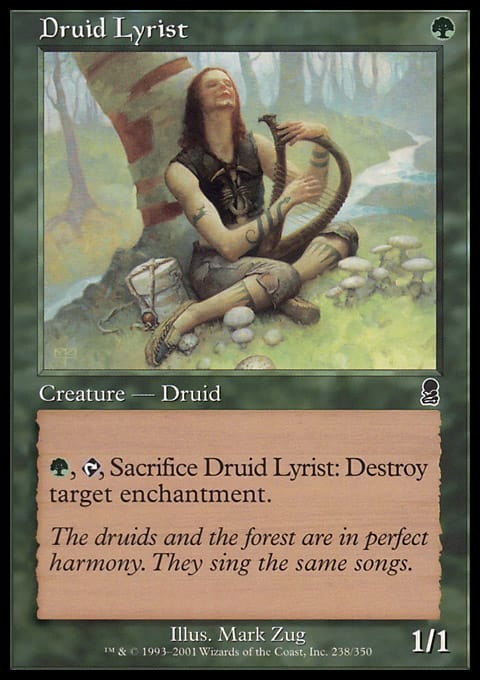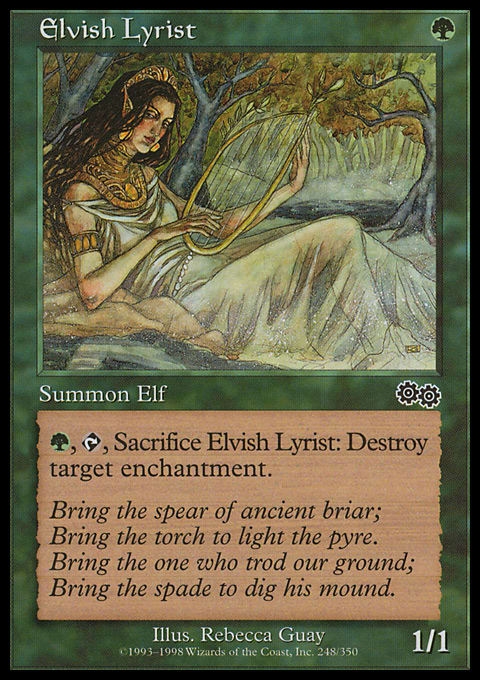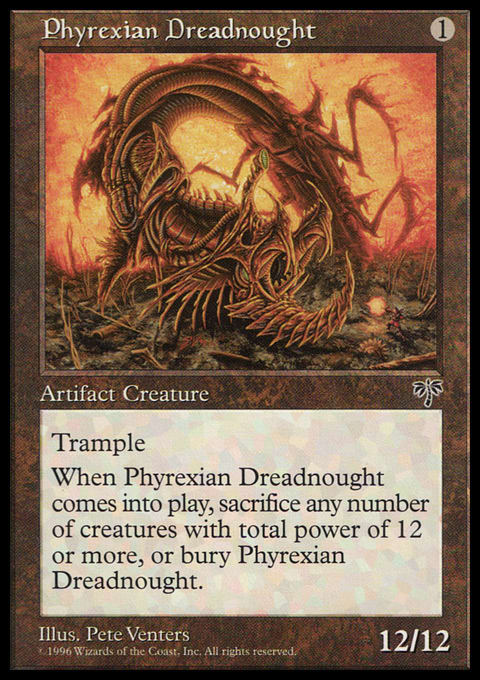The Good
Our Hero chopped in the Top 4 of the $1,000 Premodern tournament at The Bearded Dragon this past weekend. This was about as good of an outcome as I could have anticipated.
I played in a Bearded Dragon $1,000 tournament last year, where I also split in the Top 4. That time I was on Elves.
Top 4 chop with my #pss4 co-competitor @BryanManolakos
— Michael Flores (@fivewithflores) September 25, 2022
Go go Elves and thanks to @King__Ashok and especially @RolandMTG for rides and a lucky $500 Squee #premodern #premodernmagic pic.twitter.com/iavCZWmP0a
My then PSS co-competitor (and one of the principal figures in getting me into the Premodern format) Bryan Manolakos was also in the Top 4; but that's not why I split. I split because I was a coward. There was a The Rock mage with 4x Engineered Plague somewhere in the Top 4 and I wasn't sure I could get out of that matchup alive.
I hadn't yet conferred with Olle Rade; so, I didn't know the tech.
If The Rock doesn't contain your Survival of the Fittest, they aren't going to be able to beat you with just Engineered Plague; or even multiple copies of Engineered Plague. Plague is a sideboard card, so Elves is usually going to be able to face it with sideboard cards: In this case Genesis and Druid Lyrist.
"Why would you play Druid Lyrist?" Is one of the first questions I asked. "Isn't Elvish Lyrist the same, thing, but more on theme?"
Well, that's exactly why you don't play it! Elvish Lyrist is an Elf; and therefore subject to an Engineered Plague on Elves! With Druid Lyrist you can Survival for Genesis, Anger, and the Lyrist, and just pick apart one Engineered Plague per turn for five mana. Meanwhile you're drawing your card per turn and getting back Squee, Goblin Nabob. Once you're done clearing the Plagues, provided the opponent hasn't killed you to death yet, you should be able to ElfBall the opponent with whatever you just happen to have in hand at that point. Ho hum, take 30.
This year I chopped in the Top 4... I guess because of cowardice again?
Burn | Premodern | Shane Cota
- Creatures (16)
- 4 Ball Lightning
- 4 Grim Lavamancer
- 4 Jackal Pup
- 4 Mogg Fanatic
- Instants (16)
- 2 Lava Dart
- 2 Shock
- 4 Fireblast
- 4 Incinerate
- 4 Lightning Bolt
- Enchantments (6)
- 2 Sulfuric Vortex
- 4 Seal of Fire
- Artifacts (2)
- 2 Cursed Scroll
- Lands (20)
- 10 Mountain
- 2 Barbarian Ring
- 4 Bloodstained Mire
- 4 Wooded Foothills
- Sideboard (15)
- 3 Price of Progress
- 2 Lava Dart
- 2 Shock
- 2 Goblin Patrol
- 4 Overload
- 1 Flaring Pain
- 1 Winter Orb
I'm not sure if that was Shane's exact seventy-five at The Bearded Dragon. But he was coming off a Top 8 at the Sacred Torch Showdown; a $1.5k at my home store for Premodern, last month.
Red Deck, Sligh, Burn - whatever you want to call it - was my first love in Premodern, and a hell of a deck in the format once again (now that Land Tax has been banned). More locally, Shane had just defeated Adam Sitsis (finalist at Sacred Torch) who was also playing a version of ![]()
![]() Oath, in their Quarterfinals match.
Oath, in their Quarterfinals match.
Not a great prospective Top 4 matchup for Our Hero.
I was actually surprised when the other three Top 4 competitors agreed to the split.
Victory!
Victory?
The Bad
This is the deck I used to make Top 4:
Oath Paloosh | Premodern | Michael Flores
- Creatures (6)
- 2 Exalted Angel
- 4 Terravore
- Instants (5)
- 1 Enlightened Tutor
- 4 Swords to Plowwhares
- Sorceries (4)
- 4 Cataclysm
- Enchantments (9)
- 2 Seal of Cleansing
- 3 Sylvan Library
- 4 Oath of Druids
- Artifacts (8)
- 4 Mox Diamond
- 4 Sphere of Resistance
- Lands (28)
- 3 Forest
- 3 Plains
- 2 Brushland
- 2 Rith's Grove
- 2 Secluded Steppe
- 4 Rishadan Port
- 4 Treetop Village
- 4 Wasteland
- 4 Windswept Heath
That's effed up man.
— Michael Flores (@fivewithflores) October 23, 2023
Maybe the deck I chopped Top 4 of a #premodern $1k yesterday will cheer you up pic.twitter.com/gkHMbhJwd2
Premodern has entered a renaissance period following Sam Black's most recent win at Misty Mountain games. Sam combined format darling Phyrexian Dreadnought with Land Tax... And proceeded to run the tables at the Midwest's premier location for Premodern violence:
Tax-nought | Premodern | Sam Black
- Creatures (4)
- 4 Phyrexian Dreadnought
- Instants (20)
- 3 Enlightened Tutor
- 3 Foil
- 3 Stifle
- 3 Swords to Plowshares
- 4 Gush
- 4 Vision Charm
- Sorceries (3)
- 3 Gaea's Blessing
- Enchantments (6)
- 1 Oath of Druids
- 1 Sylvan Library
- 4 Land Tax
- Artifacts (9)
- 1 Ivory Tower
- 4 Mox Diamond
- 4 Scroll Rack
- Lands (18)
- 1 Forest
- 1 Plains
- 8 Island
- 4 Flooded Strand
- 4 Undiscovered Paradise
- Sideboard (15)
- 4 Meddling Mage
- 1 Engineered Plague
- 1 Red Elemental Blast
- 1 Seal of Cleansing
- 3 Brain Freeze
- 4 Annul
- 1 Swords to Plowshares
Players had been clamoring for a Land Tax ban for months, but after Sam's win, it seemed the format had kinda sorta jumped the shark. The Land Tax engine was so good that you could graft it onto a variety of distinct decks, all of which now had the ability to prevent the opponent from playing lands (or anything resembling a fun game of Magic: The Gathering).
There were other weird second order effects, too. Land Tax and Mox Diamond go really well together. For instance, you can play first-turn Land Tax with Mox Diamond, and the opponent almost has to let you draw your first free Ancestral Recall, even if they have a direct answer like Disenchant or Seal of Cleansing.
But what happens when Sam randomly adds Mox Diamond to a 12/12? It, too, gains a heretofore unseen capability. Some Dreadnought decks in the past had played Lotus Petal, but by the summer of 2022 that style had fallen out of fashion just to get more Islands for Daze, Foil, and Gush. But Mox Diamond is the kind of card that gets along well with the Islands for Daze, Foil, and Gush and enables a first-turn combo the same way that Lotus Petal once did.
Most Land Tax decks in the past were base-White. Because OF COURSE THEY WERE. But Sam's deck leaned heavily on Islands for Gush and Foil, if not Daze in this case. The result was a deck that could play out lands even post-Land Tax, and then Gush some back to hand to instantaneously turn the powerful enchantment "on." The simple act of casting Gush didn't just put Sam into a position to Tax... it implied seven more cards in hand for zero mana! Do you think you could do something with those? With, say, Scroll Rack?
I'm not sure if this was the most abusive implementation of Land Tax. I do know that it was the deck that pushed the ban over the finish line. How could it not? Enlightened Tutor, Tax-stans used to say, was the problem; not Land Tax itself. Whichever the problem was, Enlightened Tutor gave the 12/12 aspect of Sam's deck additional consistency in a way that conventional Dreadnought decks (that don't have a free Ancestral Recall to recoup the card economy) just can't invest in.
What has emerged since the ban is an explosion of new decks, all trying to do some powerful thing with the cards that remain. Oath Paloosh - kind of tongue-in-cheek named for its widest champion, the overtime Modern streamer fpawluszmtg - is just such a deck.
In the past, most Oath decks in Premodern have relied on the card Gaea's Blessing, and the ability to bring creatures into play who had very specific abilities. Ancestor's Chosen would gain a lot of life even when a Gaea's Blessing was about to trigger. Most Oath decks couldn't even cast Shard Phoenix (outside of Mox Diamond and Undiscovered Paradise) but Oath-ing it up helped immensely against Goblins and Elves.
A unique feature of at least two strains of post-Land Tax ban Oath decks is that they are just trying to get Terravore, with no Gaea's Blessing in the mix, into play. They want to mill cards - mill lands in specific - and end the opponent with a giant trampling dork.
How well this strategy holds up in a format with Swords to Plowshares is going to vary; but the Oath Paloosh players at least have a plan for how they want to protect a fairly narrow band of astronomical attackers.
- Cataclysm: If you don't have any lands, good luck blowing up my Terravore.
- Rishadan Port and Wasteland: As above, but a little more surgical rather than the literal end of [most of] the world.
- Sphere of Resistance: This card is a special case; but can preemptively lock out an opposing Swords to Plowshares, especially post Cataclysm. Contextually, Sphere of Resistance is a one-card anti-combo against the format's best threat: Phyrexian Dreadnought. The irresistible force of the Dreadnought sequence is that it is so cheap. One mana for a 12/12; one mana for Vision Charm or Stifle. With Sphere of Resistance on the battlefield, the minimum impact is turning this into a four-mana combo... And then good luck protecting a resolved one with Daze or Foil against Swords to Plowshares (no longer itself 1 mana, but still plenty cheap enough).
So most of the disruption (or really Terravore-protection) in this deck comes in the form of mana denial. What's so "bad" about that?
Nothing!
But Oath Paloosh has some considerable structural problems that are not so easily repaired. The most troubling to me is the thirty-two mana sources.
I sat down to my first round at the Bearded Dragon against Adam Sitsis; who had most recently finished second at Sacred Torch. I believe Adam has hauled his way all the way up from Philadelphia to take all this tri-state Premodern money.
I suspected from his last run (and the fact that he had been doing some prep with my Spike Colony better half Lanny Huang) that we were playing a quasi-mirror... Only with him starting with three edges.
"Odds," Adam said, as I tossed a Prerelease promo d20.
The die came down lucky number 13.
"Make that four."
"Come on Flores," said the famous Commander influencer Rebell Son, sitting next to me. "You made me listen to your podcast. I thought you had to have an iron will that you would win every tournament you entered?"
"Oh, I'm going to win the tournament," I retorted. "Just not this match."
G/W OathClysm | Premodern | Adam Sitsis
- Creatures (7)
- 3 Exalted Angel
- 4 Terravore
- Instants (8)
- 1 Argivian Find
- 3 Enlightened Tutor
- 4 Swords to Plowshares
- Sorceries (3)
- 3 Cataclysm
- Enchantments (14)
- 1 Aura of Silence
- 2 Seal of Cleansing
- 3 Sylvan Library
- 4 Oath of Druids
- 4 Mox Diamond
Adam's version plays zero copies of Sphere of Resistance (to my four) in the main deck. That would be an enormous advantage heads-up. Sphere of Resistance is symmetrical - meaning it affects both of us equally, Put another way, as Adam's deck operates equally well under Sphere (but he doesn't commit any slots to it) there would be few situations where the normally powerful artifact would be anything but a forced mulligan for me.
Between Adam's experience advantage, recent tournament pedigree (whereas I had brain farted to miss my win-and-in at Sacred Torch), and now winning the die roll? He had me down four-zero before the first land was played.
The games developed in exactly they way you'd imagine for falling under a subsection called "The Bad." In Game 1 I drew three copies of Sphere of Resistance and got waltzed on. Adam had a Swords to Plowshares for my only creature and I drew zero for his big baddies. Gotta make room for those Spheres, natch!
In Game 2 I drew all of two non-mana cards in what was maybe a twenty-turn game. Don't get me wrong; two of my cards were Mox Diamonds (that I couldn't dare cast into his Seal of Cleansing) and I had a lot of action. I could actually keep Adam at bay with Rishadan Port on his Treetop Village; and my own Treetop Villages drew fire from his Wastelands and point removal... But the core "bad" part of this strategy was exposed: It's a thirty-two mana deck with almost no way to regulate its draw. And that bit me in the butt in Round One.
Oath Paloosh is an extraordinarily mana-hungry deck despite having what looks like a miniscule curve. There are a couple of 6-drops in Exalted Angel, but they're really 3-drops, or zero mana under Oath of Druids. Much of the rest of the deck is freebies like Tormod's Crypt, Zuran Orb, and of course the signature quartet of Mox Diamonds.
It's got the one-mana elite filled with Enlightened Tutor and Swords to Plowshares.
Part of the heavy mana is tied up in the top end at four... This is a deck whose main purpose in life is to blow up all its own lands with Armageddon or Cataclysm. But it's essentially the best Cataclysm recovery deck at the same time. You will often be left with four permanents to the opponent's one or two; be burying fewer lands; and have a Mox Diamond as your "artifact" keep. Cataclysm is a key tool to suppressing powerful linear strategies... Not just a creature deck like Goblins where it acts as a kind of Wrath of God, but also against a combo-Prison like Enchantress where the opponent might be building up a fortress of Wild Growth, Sylvan Library, Solitary Confinement, Sacred Mesa, and Parallax Wave (and maybe more!). A deck like Enchantress will often enter the mid game with two copies of Sterling Grove on the battlefield, negating the potential interaction of Ray of Revelation or the assorted one-for-ones. Cataclysm though? Makes Enchantress think about their life choices a little bit.
The Ugly
My path to Top 4 was... There is only one way to say it: Plot Armor.
I'm a bum-knee'd Bruce breaking his back over Bane's right leg; but later able to bridge the un-leap-able chasm an hour down the line to save himself, then Gotham.
I'm a halfling whose discovered dagger is exactly the brand that can cut a Witch-King impervious to any damage from the hand of any "Man" just long enough for Eowyn to turn the Battle of the Pelennor Fields.
I'm luck and chance and all the words that the dealer has seeded among all the songs around all the fire pits, ever. I made Top 8 mostly because the story demanded it. Also because I got all back on the rails during the second half of the Swiss.
In Top 8 I faced Cam Fulton, with his signature Elves.
Cam was yet another decorated mage coming off a Top 8 at the $1.5k; but this time with a deadly creature-combo deck that really, really, can exploit being on the play.
But the dealer had other ideas. Cam had three mulligans in two games; whereas I had natural Oath-Cataclysm in Game 1 and a ridiculous two spell hand in Game 2:
Land
Land
Land
Land
Land
The only question was whether my Enlightened Tutor would go for a redundant Oath of Druids (say Cam had a Naturalize or Druid Lyrist), Null Rod, or Seal of Cleansing. He did, in fact, present second turn Survival of the Fittest, but my eighth card was Ray of Revelation: Literally the best possible foil given my two-spell hand.
Enlightened Tutor became Null Rod, and then my two spells started to feel like two hundred.
Top 4.
Given how well I ended up doing, this conclusion might surprise you: I don't think I'll be playing Oath Paloosh again any time soon. While I do love it as a triumph of post-Land Tax deck design, I have a really hard time getting over its thirty-two incurable ailments. One of the things I love most about Premodern is how much agency I have, whether it's defining the tempo with Mono-Red or sideboarding super strategically with The Rock. Oath Paloosh's enormous greater than 50% mana base has its reasons - and they often make sense - but I hated how passively I had to play.
In my Top 8 match, the overlap of an opponent actually vulnerable to Oath plus the opportunity to craft a future universe with Enlightened Tutor showcased the deck at its most effectively proactive. Sadly, in a lot of the rest of the matches I relied a lot more on luck or my opponents' unfamiliarity with the deck to cash in the dubs.
Is that "ugly"?
Mirror, mirror I guess.
LOVE
MIKE
































